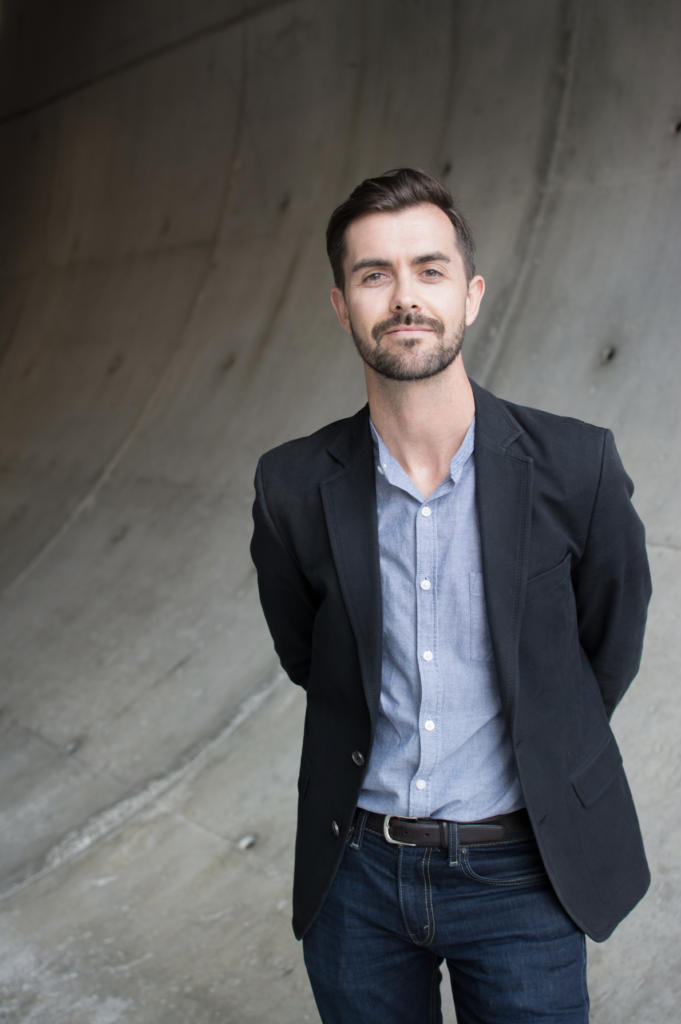Meet the Curator: Drew Klein
Posted on July 23, 2018
Drew Klein is performance art at the Contemporary Arts Center. Bringing an international sensibility to the Cincinnati scene, Klein’s curations and commissions have been nothing shy of existential, provocative—and absolutely stunning. From Takahiro Yamamoto’s Direct Path to Detour to Jens Lekman’s Ghostwriting project, the Performing Arts Director has proven tireless in his quest for extraordinary art that asks us stretch our minds.
While Klein continues to change the face of performance art in the Midwest, we’ll eagerly await the CAC Black Box performance of Blind Spot—an interdisciplinary collaboration between writer-photographer Teju Cole and composer Vijay Iyer. Blind Spot takes place Saturday, October 6 at 7 p.m., a much-anticipated curation by Klein for the 2018 FotoFocus Biennial, Open Archive.
I see you’re a CCM grad. Did you always see yourself moving back to the Queen City?
I was pursuing work in independent film, so I expected I’d spend my entire life in New York or Los Angeles. At the time, the thought of leaving Ohio forever didn’t concern me at all. Cincinnati felt like a different place then, and I couldn’t have imagined the city as it is now; a vibrant, forward-thinking place of opportunity and inclusion, with its best years ahead.
True story. How do you see FotoFocus as a key player in those changes here?
FotoFocus has contributed so, so much. Access to visionary artists working in lens-based mediums adds necessary international perspective to the region’s creative vocabulary. Now, nearly every arts organization in the region is now affiliated in some way with FotoFocus. This collective action raises awareness and interest across the board, and encourages more people to get involved.
How did you personally join forces with FF?
In 2016, FotoFocus included the opening performance of our season—Britt Hatzius’ Blind Cinema—in the extended Biennial program. This remains one of my favorite performances of the past seven years. Classes of local children aged 9–11, watching a film and narrating what is happening to a blindfolded adult audience… How do you beat that?
I’m not sure we can! It’s no real surprise that FotoFocus chose you as a Guest Curator for this year’s Biennial …
The CAC’s relationship with the Biennial was already strong when I came aboard in 2011. FotoFocus is now including even more projects that don’t fit the traditional photography exhibition format. I think that promises to keep the Biennial on top of broader changes in the arts.
Can you talk about the role of photography and archive in your career?
Having worked and been educated in film, I’m accustomed to seeing the world through another’s lens. This has been carried into my career with performance, and impacts how I view much of the work I interact with and value. Separately, performance is an inherently ephemeral medium. The documenting and archiving of live work is something that’s discussed at great lengths within the industry.
Speaking of live work, what can you share about your curated program at the Biennial this year?
Blind Spot is one of those unique opportunities to watch two cultural titans come together in true collaboration. Teju’s book Blind Spot is such an important work of our time, and to have a visionary musical mind like Vijay Iyer partnering with him brings a completely new texture that creates something magical—something better than the sum of its phenomenal parts.
How does your work specifically speak to the theme of “Open Archive?”
The book Blind Spot is a collection of various moments from Teju’s life and travels, captured in both photographs and accompanying text. While there is no narrative, something human emerges from the connections made between places, lives, and struggles.
Your work has focused on performance. How critical is lens-based art to the larger—let’s say, “big picture”—of art and modernity?
The influence that lens-based art has had on the world is overwhelmingly immense; how we share stories, experience the world. I think the medium will continue to serve as an important tool of historical document, but will also increasingly become a means of manipulation and instigation. Creatively, I hope this means artists will continue to challenge the instrument’s reverence and audiences’ understanding of what they’re experiencing. The days of presumed fidelity of a captured image are gone, but that creates new space for discovery.
